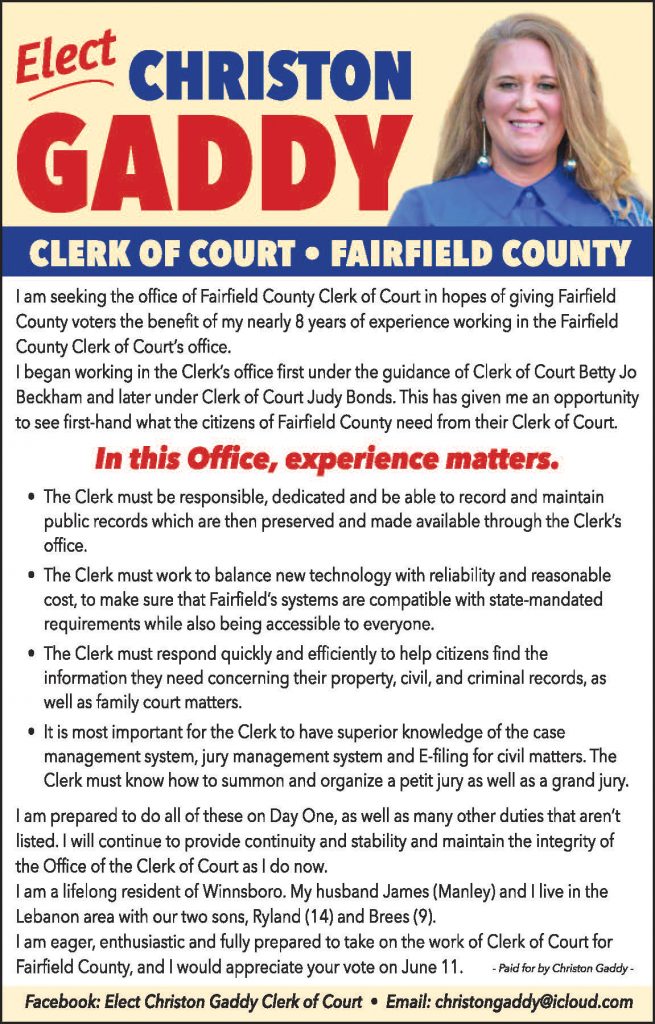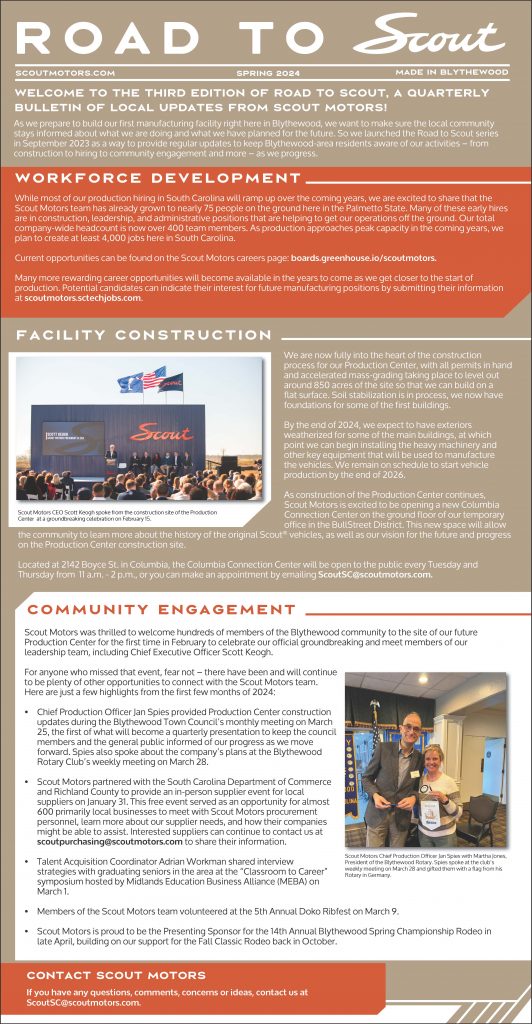WINNSBORO – In the midst of declining revenues, absent patients, a dismal August financial report and an uncertain future for some of the hospital’s departments, the Fairfield Memorial Hospital Board of Trustees Finance and Audit Committee reluctantly adopted a controversial fiscal year 2017-18 budget presented last month by Timothy Mitchell, Chief Financial Officer of the hospital. The hospital’s fiscal year began Oct. 1.
But the passage was not without stiff opposition.
Committee chairman Randy Bright expressed strong concern that the new budget was overstating projected revenues and downplaying potential losses based wholly on revenues, patient numbers and costs during the first seven months (October – April) of last fiscal year. Bright worried that the new budget did not take into account the sharp financial declines in the months following April.
The new budget still includes revenues and costs associated with the inpatient hospital and ER department even though the hospital will no longer provide inpatient services once Providence Hospital opens the new free-standing emergency clinic in Fairfield County. The FMH emergency clinic is not expected to close this fiscal year, CEO Suzanne Doscher said.
Mitchell’s new budget shows a dramatic decline in expected inpatient revenue but projects modest revenue increases in other services, including mammography, ultrasounds, radiology, and CT scans.
Bright was set off by Mitchell’s “significant assumptions driving those revenue numbers,” and pointed out that gross patient revenues (what the hospital charges for its services) are budgeted at $17,741,958 for 2017-18. Gross patient revenues for the first seven months of last year came in at $16.8 million, about 60 percent below the $24,326,758 that was budgeted last year.
Mitchell also predicted that the goal for bad debt provision (non-payment of medical bills by patients and insurance companies), would drop from last year’s 14.5 percent of charges (gross patient revenues) to 14 percent this year.
Bright quickly took issue with using numbers as of April 2017.
“We are actually looking at a much larger debt (bad debt expense)… Do you think it’s realistic we can reduce our bad debt allowance?”
Mitchell said the goal anticipates improvements the hospital has made in collecting debts, and he said he felt confident that he could shave half a point from this projected percentage.
“With the exception of a few departments, specifically Blue Granite medical center, we pretty much maintained revenue at the historical levels – we haven’t budgeted any increases. We did budget some increases in radiology, ultra sound and mammography. I’m talking about 8 percent.” These increases were due to the fact that the hospital hired a full time person to go out and market outpatient diagnostic services, he said.
Mitchell said that increases in patient volume and revenues were expected at Blue Granit because the staffing has stabilized.
The revenues budgeted for the Blue Granite are based on an average of 14 patients per day rather than the seven or eight during the previous year.
Trustee Ronald Smith asked if the revenue would then become balanced versus costs for Blue Granite. Mitchell assured him that revenues were projected to increase due to patient volume.
“But not exceeding expenses,” Dorcher said.
“That’s the one thing I get from every county council member I talk to. They ask about Blue Granite.” Smith said.
“Here’s why,” Bright said. “ If it wasn’t for Blue Granite and home health, we would not be underwater with EBITDA (earnings before interest, taxes, depreciation, and amortization.) If we had taken the suggestion to close those at the beginning of the year, we would now have a positive EBITDA.”
Mitchell concurred that in the new budget, home health and home care are projected to lose about $437,000.
Smith said it would be hard to eliminate home health in the county due to patient need and lack of other options. Blue Granite, though, is another issue, and he asked if it is needed.
“There are a lot of nurse practitioners and other options out there,” Smith said.
“There are not,” Doscher said. “For the number of healthcare providers to residents we probably have half as many as Columbia and the state average. We are very susceptible to losing providers in this community. There are four, I believe, who are over age 65. There’s a couple of things that really restrict access to care – one is not having providers and the other is not having insurance or a means to pay for providers.”
“These are both things we need, but they are the heavy losers,” Smith concluded.
“Why keep them if they don’t contribute anything to the hospital?” board member William Turner asked.
“Dollar wise they’re negative, but they’re needed by the community,” Smith said.
Bright circled back to his main concern, that the methodology being used to determine the year the budget would be based on was not accurate.
“When we take the April projection out for the entire year, that is not an accurate figure for most of these baseline numbers, because we have not done well. We have not met that trend since April. We have slid and slid and slid in most aspects. Actual gross patient revenues for the 11 months through the end of August 2017 were $14,420,553. This means that for the projection to match actuals, the hospital should generate another $2.4 million in September,” Bright said.
“A budget is a goal, and it’s a map. If the goal is too far of a stretch, like last year’s, it’s meaningless. We did not even talk about the budget last year because it was so far off. If we are going to plan expenses in a realistic way, we have to have a realistic baseline,” Bright insisted.
However, Mitchell said, very few numbers in this budget are based on the annualized values.
“In fact, 70 percent of our budget is labor and benefits, because that is 70 percent of our costs…. We don’t even look at what we did last year, we look at what we anticipate the staffing patterns will be going forward. These numbers have nothing to do with the baseline data. We are only presenting baseline data so you have some basis to compare it to.”
But Bright persisted on the need to base the hospital’s budget on accurate trending.
“How much was our inpatient volume last month?” he asked.
“Zero.” Mitchell answered. “We actually had two patients in the beds but they were not discharged so we made zero revenue.”
“Okay, thank you,” Bright responded. “You made my point. We don’t have the trend to prove your assumptions.“
After further intense discussion, getting into the weeds of the hospital’s financial situation, the committee approved a motion to accept the budget as it is, but also agreed that the finance committee will meet on the budget in December to review and adjust it accordingly and then as often as deemed necessary.
In the end, the new budget projects an operating loss of a little more than $1 million. That is projected to be $450,000 less of a loss than the projected loss for last year.
At the full Board meeting, with no further discussion, trustees voted to accept the 2017-2018 budget along with the requirement to review it again and adjust if necessary.
August Financial Report
CFO Timothy Mitchell briefed the Board on the hospital’s monthly financial report. Net operating losses for the month of August were $282,619, and average daily gross revenues decreased from $39,286 in July to $35,670 in August. For the fiscal year to date (October 1, 2016 through August 31, 2017), the hospital has a loss of $1,286,239. While the hospital has decreased its operating expenses by $965,375 from the previous year, revenues from patient services decreased twice as much, by $1,957,893.
Other statistics show that only one patient was admitted to the hospital during August, but there were 570 ER admissions and 586 other outpatient admissions. While the ER admissions decreased in August, other outpatient admissions increased from the previous month.












